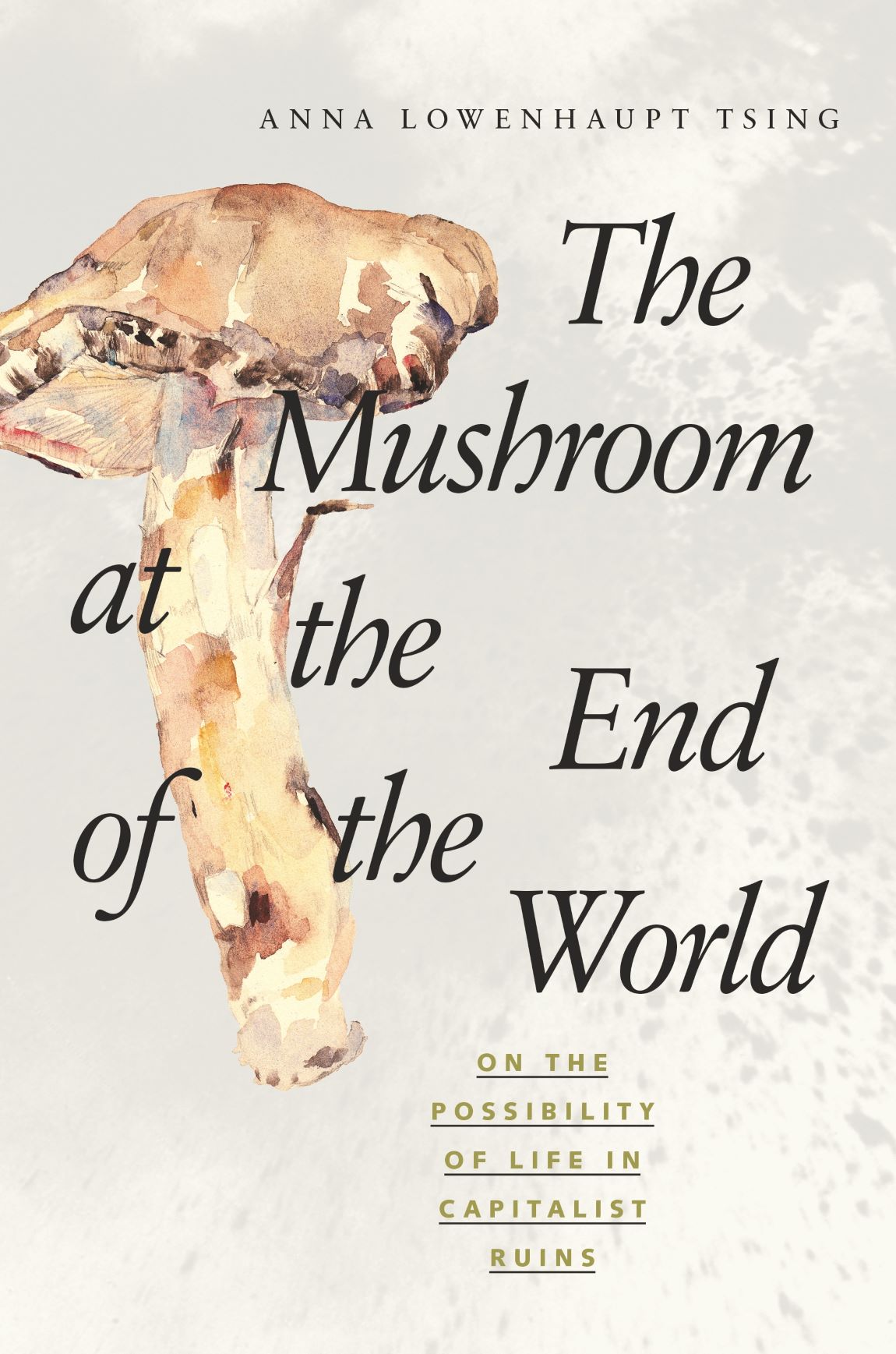
“Matsutake is the most valuable mushroom in the world—and a weed that grows in human-disturbed forests across the northern hemisphere. Through its ability to nurture trees, matsutake helps forests to grow in daunting places. It is also an edible delicacy in Japan, where it sometimes commands astronomical prices. In all its contradictions, matsutake offers insights into areas far beyond just mushrooms and addresses a crucial question: what manages to live in the ruins we have made?
A tale of diversity within our damaged landscapes, The Mushroom at the End of the World follows one of the strangest commodity chains of our times to explore the unexpected corners of capitalism. Here, we witness the varied and peculiar worlds of matsutake commerce: the worlds of Japanese gourmets, capitalist traders, Hmong jungle fighters, industrial forests, Yi Chinese goat herders, Finnish nature guides, and more. These companions also lead us into fungal ecologies and forest histories to better understand the promise of cohabitation in a time of massive human destruction.
By investigating one of the world’s most sought-after fungi, The Mushroom at the End of the World presents an original examination into the relation between capitalist destruction and collaborative survival within multispecies landscapes, the prerequisite for continuing life on earth.”
Last week we took a deep dive into the themes of Anna Lowenhaupt Tsing’s book “The Mushroom at the End of the World: On the Possibility of Life in Capitalist Ruins”, as part of the TAKING CARE Project’s first Bookclub meeting.
There was a consensus among us all that this book can be considered inspiring, especially in the light of its interdisciplinary approach and is of great relevance to the themes of this project. This pertains to topics such as production vs trade in capitalism, cultivation and dependency, natural disasters and global warming, precarity, decontextualization of objects and accumulation systems.
The book makes us aware how much capitalism is driven by and focused on trade and not on the actual production of commodities. As a result, this can lead us to ask the question what the production of an object is even worth in today’s system. The work that has been put into creating, collecting, assembling a product does not determine its worth or importance. For our field and our project, it is inevitable to draw a strong parallel to the colonial economic and value systems.
The matsutake mushroom is a unique case itself as it only grows wild under very specific circumstances and evades economic reproduction. It cannot be cultivated; therefore, there can be no reliance on continuous and stable flow of this product. This makes it an unpredictable commodity with fluctuating outputs, which have in turn led to the creation of its very own complex commodity system.
As the matsutake only grows in human disturbed forests, the book makes us aware how this disturbance has had an impact on or even caused central problems we face today. This can for example be seen, in the context of global warming and climate precarity. The author highlights this when writing about California’s forest fires that are in large part a result of insufficient and simply wrong forest care, stemming from a loss of knowledge and resources but also overexploitation.
It is apparent that several connections and related themes can be made between the matsutake and museums, especially ethnological museums. Firstly, in reference to the decontextualization of objects, which are no longer seen and understood in their original context of use, origin and knowledge leading to alienation. The museum creates a new context in a similar way as the matsutake does within its commodity chain.
Ethnological museums can also be seen as places of accumulation, many of the objects were collected as part of collection excursions and not part of research trips. In these cases, there is very little information available about the objects themselves. It begs the question what they are kept for, are they just in the museum for its need to own and accumulate?
A central theme of the book as well as our TAKING CARE Project is precarity. Tsing puts into focus how precarity takes away the plannability, which we seem to value or require so intensely. In terms of the matsutake, meaning is given through relationships and value is added individually and differently. This in turn can lead us to the conclusion that we have to rethink how we attribute value and how we approach an increasingly unplannable precarious world.
We had all noted how clearly and transparently the methodical approach of the book was explained, especially considering the highly interdisciplinary nature of the theme. There was however some disagreement within out discussion about how atmospheric we wish our reading materials to be.
All in all
the book club was very intrigued and stimulated by reading and discussing this
oeuvre and we are looking forward to the next text discussion. There is a wide
range of literature to choose from, as the themes of the project are very much
in focus presently.
Should you have a suggestion for us, please feel free to get in contact with us via this homepage!